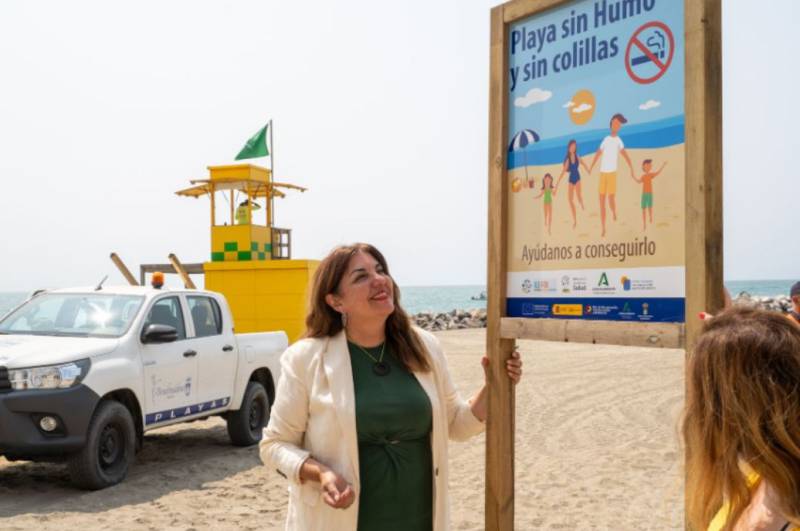Spanish News Today Editors Roundup Weekly Bulletin June 13
TOP STORIES: "Just two weeks before Spain changes all its road signs" & "They’ve finally resolved the Gibraltar post-Brexit situation!"
Plenty of exciting changes and updates this week in Spain. Surely one of the most incredible pieces of news was that 9 years after the Brexit referendum, the UK and Spain have finally reached a deal on Gibraltar which should keep (almost) everyone happy.
There are also (probably) positive changes to come as all new road signs get rolled out across the country starting next month, and we’ve also got an in-depth profile for you of the nicest guy in sport right now, Carlos Alcaraz, plus the usual roundup of other news stories from Murcia, Alicante, Andalucía and across Spain this week. Let’s begin.
Rocksteady
This week, British Foreign Secretary David Lammy, Spanish Minister for Foreign Affairs José Manuel Albares, Gibraltar’s Chief Minister Fabian Picardo and EU trade chief Maroš Šefčovič all sat around a table and finally got it done. Nine short years after the Brexit referendum and five years after nearly everything else Brexit-related was tied up in a nice, neat little bow,
Spain, the UK and the EU have at long last reached an agreement on Gibraltar’s post-Brexit status, settling the question about how the British Overseas Territory’s border with Spain will function.
The new framework removes checks at the land border while allowing Spain to carry out Schengen controls at Gibraltar’s air and sea ports. It seems they’ve managed to find a solution that pleases everyone on all sides – letting the UK retain its sovereignty over Gibraltar while ensuring that Spain can comply with EU immigration law.
The agreement is being described by all sides as “historic” and marks a significant step in normalising Gibraltar’s position following its exclusion from the original Brexit withdrawal agreement. Talks had continued independently since 2020, but were frequently stalled by sensitive sovereignty issues.
Under the new arrangement, Spanish Policía Nacional officers will conduct Schengen entry and exit checks at Gibraltar’s port and airport, while Gibraltar’s own authorities will carry out their checks independently. This model is similar to the system used at London’s St Pancras station for Eurostar travellers heading to France, where French border guards are stationed, and it means passengers will be able to enter the Schengen area from Gibraltar without facing further checks once inside Spain.
This comparison aims to calm criticism of the presence of Spanish police at Gibraltar airport and port. In practical terms, the solution eliminates the need for routine land border controls at the crossing between Gibraltar and La Línea de la Concepción, used daily by some 15,000 workers and visitors.
The solution is so simple it makes you wonder why they didn’t think of it in the first place, especially as they already have a precedent for it. The move is aimed at easing mobility for residents and commuters while respecting the legal frameworks of both parties. David Lammy called the deal “a practical solution after years of uncertainty” and stressed that UK sovereignty and control over military sites, including the RAF airbase in Gibraltar, would remain unchanged.
Fabian Picardo welcomed the outcome, saying it “protects future generations of British Gibraltarians” and preserves the territory’s constitutional status, while Albares described the agreement as “a new beginning” and emphasised that it would lead to “the disappearance of the fence”, signalling the end of a physical and symbolic divide in continental Europe.
Spain had originally proposed that Frontex border guards would be stationed at Gibraltar’s entry points, but the final agreement grants these responsibilities directly to Spanish police. However, they will act as enforcers of the Schengen code rather than representatives of the Spanish state, a formula intended to avoid conflict over sovereignty.
The deal also sets out the basis for a future customs union between Gibraltar and the EU, eliminating routine goods checks and agreeing on indirect taxation rules to prevent economic distortions. Tobacco taxation, a long-standing source of tension, will be addressed under the agreement to promote fairness and regional prosperity.
Other provisions include joint commitments to fair competition in areas such as taxation, labour rights, environmental protection and transport. Social security coordination and rights for cross-border workers are also covered, alongside plans to set up a regional development fund.
It’s all very promising, then, and we’ll have to wait and see what comes of it in practice and what further-reaching effects it has. Now there’s just that little niggly Brexit problem to resolve of Northern Ireland, security and fishing rights. As people are fond of saying, it’s “the gift that keeps on giving”.
All new road signs roll out in Spain next month
Living in Spain is certainly never dull and the traffic authorities in particular like to keep us on our toes. So just when you think you’ve figured out all those colourful and confusing traffic signs, they go and change them all over again.
But before you start panicking about having to relearn everything, hear us out because this time around, the changes actually make sense.
Back in 2003, electric scooters were science fiction, e-bikes were barely a thing and most of us were still using flip phones. Now we’ve got people zipping around on everything from electric unicycles to those rental scooters that seem to multiply overnight. The old signs just weren’t keeping up with reality.
The big idea behind this overhaul is refreshingly straightforward. They want signs that are easier to spot, quicker to understand and accessible to everyone, whether you’re driving a car, riding a bike, walking or scooting around.
One of the coolest changes is that they’re ditching gendered symbols for more inclusive, universal figures. No more little sign people that look like they stepped out of a 1950s manual. The new designs will be more modern and frankly, more representative of how people actually look and move around today.
They’re also cleaning house with outdated signs that serve no purpose anymore. You know those mysterious signs that make you wonder what they’re supposed to mean? Many of those are getting the boot. At the same time, new signs are coming in to handle all the modern ways we get around town.
The goal is that you should be able to understand what a sign means even if you’ve never seen it before.
Behind all this is a new official catalogue that will standardise what signs look like and what they mean across the entire country. They’re taking into account international standards while also considering the symbols that we’re already familiar with.
The environmental angle is interesting too. They’re revising the sizes of road signs to reduce their environmental impact, which is a nice touch, and service station signs are getting updates to include information about new fuel types.
Parking signs are also getting a makeover to be more detailed and informative. Anyone who has ever got a parking ticket because they misunderstood a confusing sign will appreciate this change.
So starting this July, keep your eyes peeled for the new signs as they start appearing. In the meantime, you can check out our
Driving in Spain Facebook group where you’ll find all the latest motoring and travel news.
The unstoppable rise of Carlos Alcaraz
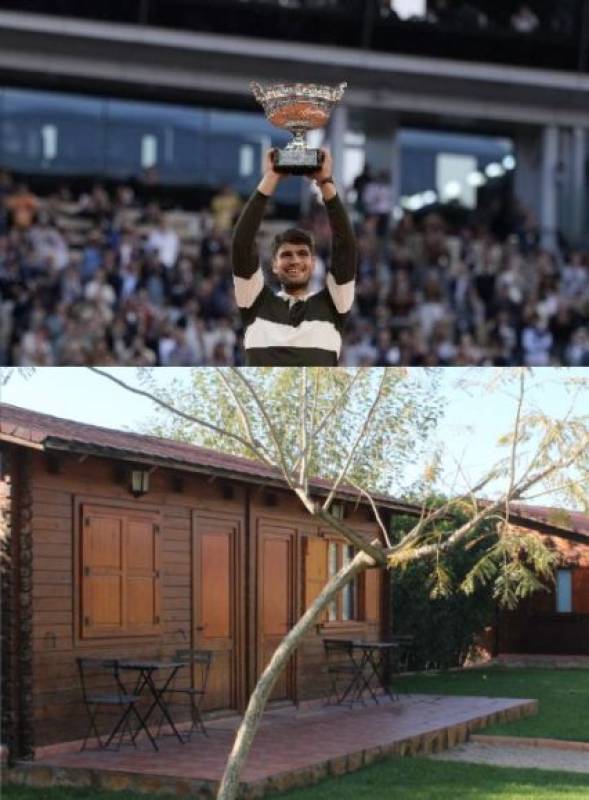
Carlos Alcaraz is something of a point of pride for people in Spain (and not just the Spanish!), especially those in his native Murcia. Whether it’s the boyish grin that gives him a Roger Federer-ish likeability or his sheer determination to never give up that has echoes of Rafa Nadal, for whatever reason Alcaraz is intensely popular. And talented of course. And, perhaps most endearingly of all, he is incredibly humble.
Fresh from his
jaw-dropping comeback against Jannik Sinner in the French Open final – a 5-hour, 29-minute marathon that’ll go down in history – the 22-year-old Spaniard has cemented his place in the tennis elite for all time. He saved three championship points, clawed back from two sets down and delivered the final blow with a screaming forehand winner in the final-set tie-break. Cue the collapse. Cue the tears. Cue the legend.
It was epic. The kind of match that makes you cancel your Sunday plans and sit glued to the telly, breath held and heart racing. It was the longest final in French Open history, and with this win Alcaraz becomes the eighth man in the Open era to win back-to-back titles at Roland Garros. And while the tennis was sublime, it’s Alcaraz’s attitude that really sets him apart. He’s respectful, grounded and seems completely unbothered by the glitz and noise that usually follows players at his level.
Because when he’s not dismantling the best in the world on centre court, ‘Carlitos’, as he is affectionately known, is
living the simple life in a 90m2 prefabricated wooden house at the Ferrero Tennis Academy in Villena, Alicante, right near the border with the Region of Murcia. It seems unbelievable for a man who will have to pay over €1,000,000 just in taxes after his Roland Garros win, but Alcaraz lives in a little wooden shack.
It is the very same wooden home that used to belong to his coach, Juan Carlos Ferrero, back in the early 2000s. No marble floors. No penthouse views. Just olive trees, red clay and a focus on the basics: train, rest, repeat.
It is here, in this unassuming setting – with its 20 tennis courts and facilities designed to support the development of aspiring tennis players, many more of whom also live on-site – that Alcaraz has quietly put together one of the most impressive résumés in recent tennis history. Five Grand Slam titles and counting, including a growing collection of Wimbledon trophies – two already, both taken from the grasp of Novak Djokovic, no less. Now he’s
eyeing a historic third straight title at SW19 when Wimbledon gets underway later this month.
And he might just do it. His win rate on grass is better than anyone else currently swinging a racket. Grass was once his weakest surface, but not anymore. He’s 24 wins from 27 matches on the green stuff, and looking more at home there than most Brits do at a Sunday roast. If he bags the Wimbledon trophy again, he’ll become only the fifth person in nearly 60 years to conquer both Paris and London in the same year.
But for all the trophies, stats and glowing headlines, Alcaraz’s secret weapon might just be how normal he seems. He laughs a lot. He praises his rivals. He thanks the ball kids. After his win over Sinner, he called it a “privilege” to share the court with him. No bravado. No drama. Just class and humility. He’s like the Rocky Balboa of tennis.
Carlos Alcaraz isn’t just the future of tennis. He’s the now, and he’s doing it all with a smile, a racket and the kind of human qualities that makes even non-sports fans fall in love with tennis… or maybe just with him!
Murcia
And it seems some of that magic momentum is rubbing off on the Murciano’s home region, which is taking small but significant steps forward recently. We can start by addressing our favourite topic of all, Corvera Airport, where easyJet’s latest announcement has brought joy and relief that finally someone is paying attention to the demands of travellers here.
The low-cost airline has promised a boost to winter connections with the UK thanks to
flights from Bristol and London Luton that are set to run through the colder months. Previously, these flight paths were only available in summer, so for easyJet to run after October comes around gives holidaymakers and regular commuters more flexibility. Also, importantly, it potentially paves the way for more future year-round routes to be added in the future. As we’ve said so many times, it is the airlines who have the money and the power to add more flight routes at the airport. If they see this commercial venture works for their bank balance, they may be inclined to increase the number of different flight destinations and frequency.
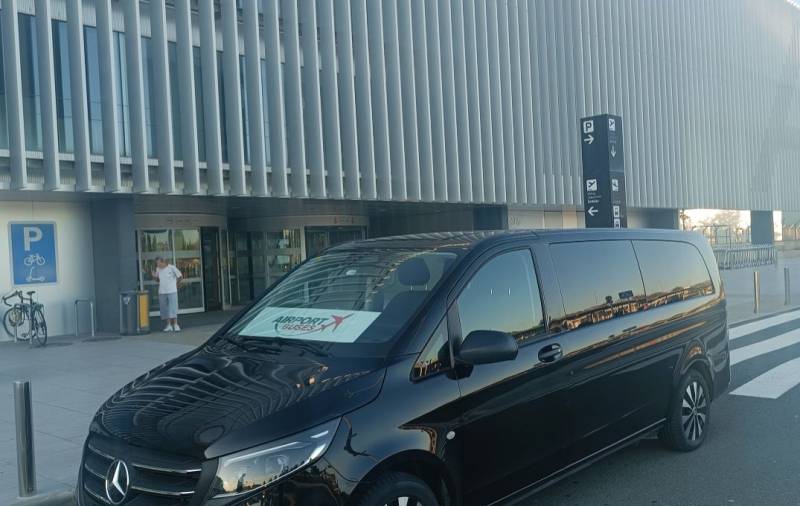
The same goes for Airport Buses. Launched just weeks ago, the
new shuttle bus service at Corvera Airport is already being widely praised for its modern fleet, reliable schedules and friendly staff. Loads of people have already used its coaches and private transfer vehicles to move between the airport and various parts of the Region, and even as far as Torrevieja to the north and San Juan de los Terreros to the south, but the truth is that this is a commercial venture, too, and its long-term future hinges on steady passenger growth. If people want to see this service continue and even expand in future, those who fly in and out of the airport must support it by actually using it. If you don’t use it, you’ll lose it.
Improved transport isn’t the only sign of progress. Over at the Condado de Alhama Golf Resort,
the ambitious Alhama Nature project is gathering pace with new openings. Groundwork about to begin on a 5-star hotel and five professional football pitches, say the folks from Alhama Nature, and the resort is positioning itself as a future hub for sports tourism and high-end leisure.
The plans don’t stop there. Additional tourist accommodation, restaurants and the revitalisation of the sorry golf course all point to a broader vision of Condado as the fully realised year-round destination it always had the potential to be, blending residential life with tourism and sport. But whether this all comes to fruition or if it’s all just marketing guff from Alhama Nature to sell more units will take a couple of years to tell.
For more immediate improvements, we can look to Los Alcázares, where a new self-service hub allows residents to
update digital certificates and NIEs without the usual wait for appointments. Housed inside the town’s Security Centre and accessible 24/7, the facility is part of a wider effort to modernise local administration and make basic processes less of a bureaucratic headache so that anyone with a chipped NIE card can use the system to update their digital certificate and access code without having to book a slot or travel to a central office. It’s a small but meaningful change that could make everyday life that bit easier, especially for foreign residents tired of navigating Spain’s often slow-moving paperwork maze.
But not all new initiatives are aimed at tourists or are about making money. As temperatures rise early this (pre-)summer, Murcia’s charities and institutions are turning their attention to those most at risk. In the capital, a
‘climate shelter’ for the homeless has opened earlier than planned this year, offering shaded respite and human connection in a modest space near the Merced campus.
Run by NGO ‘Solidarios para el Desarrollo’, the shelter combines hydration and activities with a warm welcome, and is an example of how a low-cost project can deliver high-impact support. Alongside it, the city council has activated around 50 public cooling centres across Murcia to protect the elderly, vulnerable and unhoused during episodes of extreme heat.
The Air Festival is a hugely popular event each year – more than 300,000 people are expected to attend this year, so you can expect crowds and parking problems if you decide to take the car – but it will be well worth it for the festive atmosphere and amazing aerobatics, which are visible from the beaches of Santiago de la Ribera and Los Alcázares.
For other things going on in the Region of Murcia this weekend and beyond, remember you can always see our EVENTS DIARY:
Spain
We’ve all noticed how shopping has changed lately. Many people now do their weekly grocery hauls online these days, then just pop into the nearest corner shop when they need something urgently. It’s no wonder that big supermarket chains like Alcampo are having to scale back their operations.
But there’s one supermarket giant that seems to be bucking this trend: Carrefour.
The French chain revealed this week that they’re actually doubling down on their Spanish operations,
planning to open 100 brand-new stores before we even reach the end of 2025. That’s going to mean more than 700 new jobs.
What makes this announcement even more interesting is the timing. Just a few weeks ago, Alcampo, which also happens to be French, announced they’d be letting go of roughly the same number of employees and closing 25 stores across the country.
While Auchan Retail, which owns Alcampo, is struggling to stay afloat, Carrefour is positioning itself to have more than 1,600 outlets in Spain by the end of 2025 and they’re showing no signs of slowing down.
Right now, they’ve got about 1,500 stores scattered across the country. That includes around 200 hypermarkets and nearly 1,100 of those handy Carrefour Express convenience stores we’ve all probably used at some point.
This expansion isn’t exactly new for Carrefour. Between 2019 and 2024, they managed to open 691 stores, which represents a pretty hefty investment of €150 million and created 3,500 jobs. That’s quite a commitment to the Spanish market.
Last year was particularly busy for them. They finished integrating the 47 Supercor stores they bought from El Corte Inglés, converting them into their various formats like Carrefour Market, Carrefour Express and Supeco. Most of these are concentrated in Madrid, Catalonia, Andalucía, the Balearic Islands and the Valencian Community.
Spain’s popular youth travel scheme, the ‘Verano Joven’, is making a comeback for the third year running. If you’re between 18 and 30 (or know someone who is), this could be your ticket to
exploring the country on the cheap this summer.

The deal will cover travel between July 1 and September 30, so basically the entire summer season. What the Verano Joven means for younger jetsetters is savings of up to 90% on regular state bus services and those conventional medium distance and narrow-gauge train routes. The faster Avant trains will come with a 50% discount, and high-speed and long-distance tickets from all operators will also be half price.
They’re even throwing in Interrail Global Flexible passes through Renfe, which let you travel for ten days within a two-month period.
One of the best things about the scheme, which they introduced last year and are keeping this time around, is that it’s open to all young legal residents in Spain, no matter where they’re originally from. So yes, Spanish citizens and young EU nationals can take advantage, but so can residents from non-EU countries.
The only requirement is that you need to have been born between January 1, 1995 and December 31, 2007.
Even though house prices keep climbing in Spain and mortgage costs are going up right alongside them, foreign buyers are still flocking to the country. Whether they’re looking to relocate to those sunny coastal areas or just want to grab a holiday home, the demand is definitely there. And lately,
it’s the Germans who are really making their (Deutsch)mark.
Last year, Germans were already the third biggest group of foreign property buyers in Spain, and they were spending serious money too. But now, in the first few months of 2025, they’ve taken the lead when it comes to mortgage applications, cementing their position as major players in the Spanish property scene.
The latest reports from idealista show that during the first quarter of this year, German buyers made up 16.6% of all foreign mortgage applications. That’s the highest percentage of any country, and they just managed to edge out the British, who came in at 14.2%. There’s then quite a gap before we get to the Swiss at 8.7% and Americans at 7.7%.
Rounding out the top ten are buyers from France (7.5%), the Netherlands (6.9%), Ireland (4.4%), Belgium (4%), Italy (2%) and Sweden (1.9%). All the other countries combined make up 26.1% of foreign demand, though individually their shares are pretty small.
When you look at the big picture, foreigners only account for 3.6% of total mortgage demand in Spain, but that 3.6% figure is actually pretty interesting when you consider how much Spanish politicians have been talking about foreign buyers lately. Many of them keep pointing fingers at all these second homes and holiday properties owned by foreigners, saying they’re making the housing shortage worse. President Sánchez is still pushing for higher tax rates on non-EU buyers, though that whole debate is far from over.
It might just be a coincidence but it’s worth noting that last year, before all the tax hike talk started, German mortgage applications were only barely ahead of British ones. The Germans had 15.3% compared to 14.7% for the British. Now that gap has widened significantly to 2.4%.
And here’s something else that might make Spanish policymakers think twice about where to point the blame for housing issues: foreign buyers earn way more money than Spanish ones. The average Spanish person applying for a mortgage makes €3,379 per month, while foreigners are pulling in almost double that at €6,572.
The highest earners are the Swiss and Americans, with monthly incomes exceeding €9,000. Italians aren’t too far ahead of Spaniards, averaging around €3,900.
When it comes to where these foreign buyers want to put down roots, the Mediterranean coast is by far the most popular choice. The Valencian Community takes the biggest slice of applications at 26.8%, followed by Andalucía at 21.1% and Catalonia at 14.5%. Madrid and the Canary Islands are also popular destinations, along with the Balearic Islands and the Region of Murcia. Food for thought.
Alicante
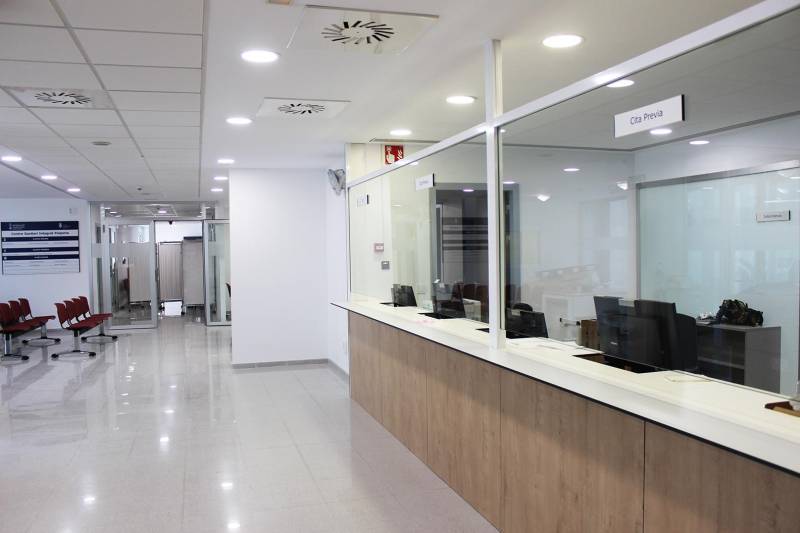
Back in November, Marciano Gómez, the health councillor for the entire Valencian Community, announced that GPs (or
médicos de cabecera as they’re known locally) would no longer have to work on Saturdays. The idea is to give them a better work life balance, and those Saturday hours will be shifted to weekday afternoons instead.
The details started becoming clearer in March when it was revealed that there wouldn’t be any scheduled appointments available on Saturdays anymore. Instead, patients would have more time slots to choose from during the week. Now Gómez has put a date on it: the changes will kick in from October 2025.
He’s trying to reassure people that things won’t really change that much for patients. If you need emergency care on a Saturday, you’ll still be able to get it at health centres that are classified as ‘Puntos de Atención Sanitaria’ (PAS) or ‘Puntos de Atención Continuada’ (PAC). Basically, the emergency services will still be there when you need them.
One possible kickback, however, stems from the fact that many neighbourhoods are actually closer to a hospital than to a health centre that offers emergency consultations, so there is concern that hospital A&E departments are going to get absolutely swamped on Saturdays.
The whole thing ties into some broader changes happening with GP working hours. Right now, GPs work a 37.5-hour week, but that’s going to drop to 35 hours once the pending working hours legislation gets approved.
The summer has barely started and we’re already seeing the annual campervan drama kicking off along the Costa Blanca. Over the next few months, motorhomes are going to be everywhere, parked up in car parks and tucked into beachside spots all along the coast.
But this year, things are getting particularly heated in Alicante, where local councils are really
cracking down on motorhomes. New signs are popping up at popular beach locations like Agua Amarga and Urbanova, basically telling any vehicle over five metres long to move along.
Now, it’s fair to say that the Costa Blanca doesn’t exactly have an abundance of proper camping facilities. But even when there are campsites available, a lot of vanlifers still choose to park overnight in free public spaces to keep their costs down. You can hardly blame them when camping fees can really add up over a long holiday.
Sadly for them, that option might not be around much longer. Over the past few weeks, several coastal towns including Elche and Santa Pola have been putting up signs warning that large vehicles aren’t welcome unless they’re there for public services.
As you’d expect, motorhome owners aren’t taking this lying down. Last weekend, they organised a protest, demanding equal treatment and arguing that they should have the same right to enjoy the coast as everyone else. It’s hard not to see their point.
Here’s where it gets interesting from a legal standpoint. Spanish national law actually says that motorhomes can park anywhere regular cars can, as long as they stick to their physical footprint. That means no putting out awnings, no setting up camp chairs and no opening those big side windows that essentially turn the van into a mini outdoor living room. But here’s the catch: local governments can impose their own restrictions, and that’s exactly what's happening in Alicante.
The motorhome community is pushing back hard, arguing that these new local rules aren’t actually backed up by national traffic laws and that councils don’t have the proper authority to implement them.
It’s shaping up to be quite the legal and practical battle, and we’re probably going to see a lot more of this drama unfold as the summer season really gets going.
In four different parts of Alicante province, scientists have discovered thousands of fossils from plants and vertebrates that are more than 220 million years old, dating back to the Late Triassic period. We’re talking about
finds that predate almost all dinosaurs.
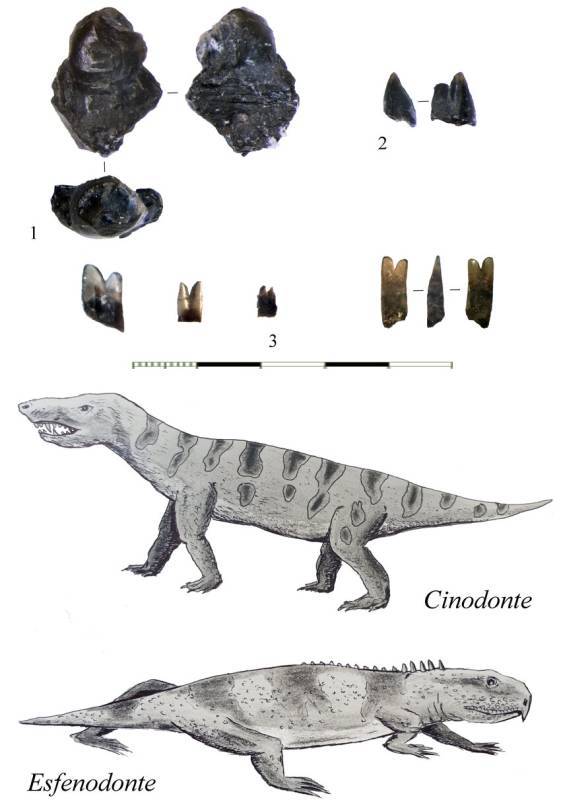
The fossils have been found in four places: rocky areas in Vallongues (Elche), Tibi, Agos and Biar. What they’ve uncovered is absolutely fascinating. There’s amber, tooth fragments, scales from amphibians and ancient reptiles, partial skeletons of lungfish and freshwater sharks, plus incredibly well-preserved plant remains including horsetails, ferns and early cone bearing trees.
What makes this find so special is that these vertebrates could be the oldest ever discovered in the province, potentially making the area an international reference point for palaeontology. The variety and preservation quality are apparently exceptional.
The team thinks they may have found the world’s oldest resin fossil, and they’ve even discovered tree trunk fragments over a metre-long with fossilised leaves showing mosquito bite marks. During their recent digs, they’ve uncovered remains of large terrestrial animals that could have measured between three and five metres long, possibly ancestors of Tyrannosaurus Rex.
Right now, the researchers are funding everything themselves and are looking for universities and museums to help preserve and eventually exhibit these incredible finds.
Andalucía
The new €1.5 million project, which will take around eight months to complete, is designed to improve access to the arrivals area and ease congestion as traveller numbers continue to grow in 2025.
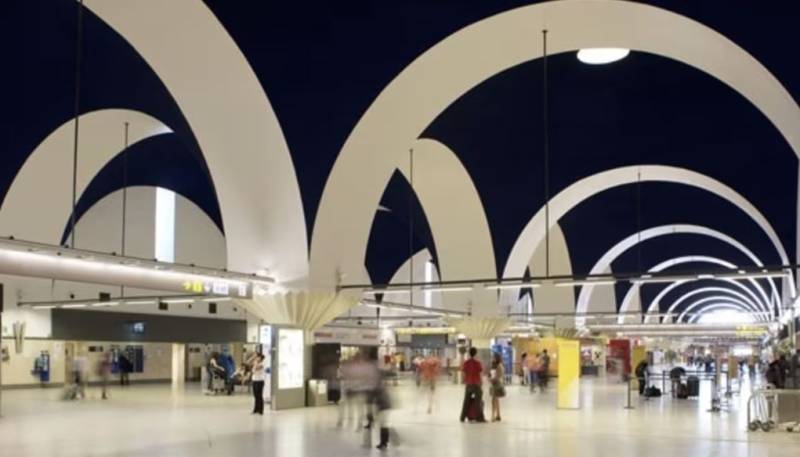
The work will include a full revamp of the arrivals tunnel and nearby roads, new paving, smart pedestrian crossings, improved parking signage, and restructured footpaths. Traffic direction around the terminal will also be adjusted to better manage both private and commercial vehicles.
Accessibility is a key part of the plan. Two new vertical connecting hubs will be added, featuring lifts, staircases and an escalator to make it easier to move between arrivals and departures. A platform lift and automatic doors will also be installed to improve mobility access and shelter from the weather.
The project comes hot on the heels of the terminal building expansion and is part of wider improvements led by airport operator Aena to modernise infrastructure across Spain’s major airports.
The strongest tremor, measuring 3.2 on the Richter scale, struck at 12.50am on Saturday June 7 in Cártama and was felt by residents, although no damage or injuries were reported.
Even though, no emergency alerts were triggered, the activity was enough to raise eyebrows and keep the National Geographic Institute on watch. They stated that the seismic swarm began on Friday night, with several smaller quakes also affecting the nearby towns of Almogía, Valle de Abdalajís, Álora and Pizarra.
While earthquakes are not uncommon in Andalucía, swarms like these do tend to spark concern, particularly in built-up areas. For now, though, geologists say the activity was within normal limits and no further action is needed.
Back on the coast, and in a quieter kind of environmental shift, Benalmádena has made a fresh push for cleaner air and healthier public spaces. The ayuntamiento has designated Playa Bonita as its
first ever smoke-free beach.
Councillor Presi Aguilera announced that the pilot initiative, is part of the wider Andalusian Tobacco Control Plan and aims to raise awareness of the dangers of smoking in shared spaces. It aims to protect beachgoers from second-hand smoke while cutting down on pollution from cigarette butts.
“It’s very important for Benalmádena to be part of this project,” she said, “part of the Andalusian Network of Health Services and Smoke-Free Spaces.”
Clear signage will mark out the no-smoking zones along Playa Bonita, with the aim of protecting both residents and visitors from second-hand smoke and reducing environmental harm caused by cigarette butts.
The beach will act as a pilot zone throughout the summer and the ayuntamiento hopes the move will promote healthier habits for both locals and visitors. If successful, they may well consider expanding the initiative to other popular beaches across the town.
Benalmádena joins a growing number of Spanish coastal destinations adopting similar policies, offering visitors a cleaner and more enjoyable day at the beach.
You may have missed…
- From stray to star—Ray the rescue dog joins Los Alcázares police force.
Meet Ray, the once-abandoned dog with a story that is nothing short of inspiring. Found alone in Los Alcázares during a night patrol by Officer Jennifer García, Ray was adopted and has now become a fully certified police partner, helping to protect the streets where he was once left behind.
- Over 30 endangered manta rays released after being captured by accident in La Azohía, Murcia.
More than 30 manta rays accidentally caught in the Almadraba of La Azohía, near Cartagena, have been successfully tagged and released back into the Mediterranean Sea thanks to a landmark collaboration between Anse. Asociación de Naturalistas del Sureste and WWF España.
- Madrid revs up for 2026 Formula 1 Grand Prix.
Formula 1 has officially confirmed the date for the inaugural Madrid Grand Prix. The event will take place from Friday September 11 to Sunday September 13, 2026, at the new MADRING circuit being developed around the IFEMA exhibition centre in the Spanish capital.
- Up-and-coming pop star Ana Ruiz tells why “the next Shakira” is all her own woman.
Once in a while, a vibrant new pop musician bursts onto the scene with a distinctive style and aesthetic, heartfelt lyrics with a message, and an inspiring level of creative control over their output. Now Ana Ruiz, from Cartagena, is all set to move the masses, and has a special place in her heart for the UK.
- From Los Alcázares to Scotland—Two scooterists are finally finishing their epic charity mission.
Paul and Julie are about to embark on an epic journey that’s been five years in the making. The pair are riding a classic Lambretta scooter all the way from Los Alcázares in Murcia to Ayr in Scotland, raising money for two fantastic charities along the way!
And that’s all for another week. Thank you, as ever, for reading and look out for your next edition next week.
Happy weekend!



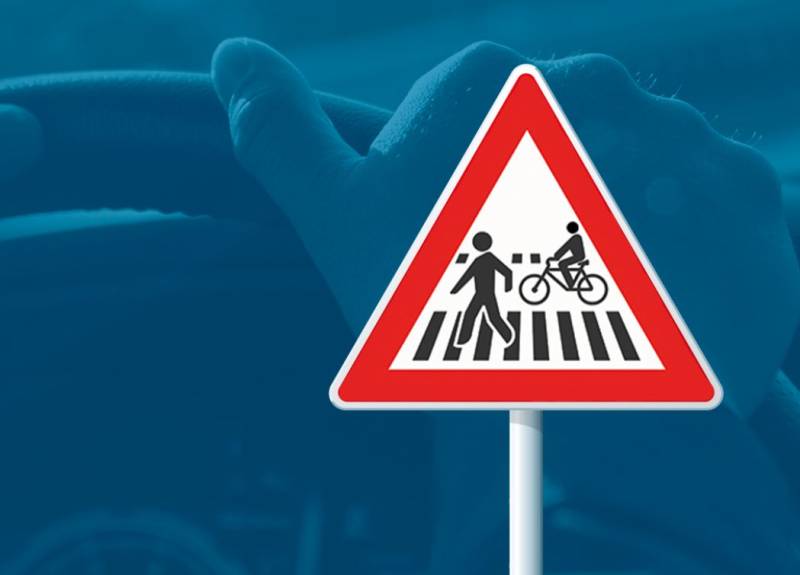
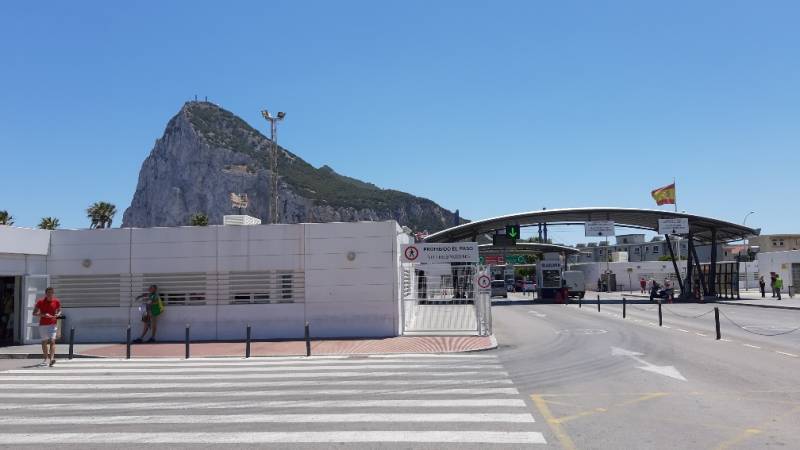

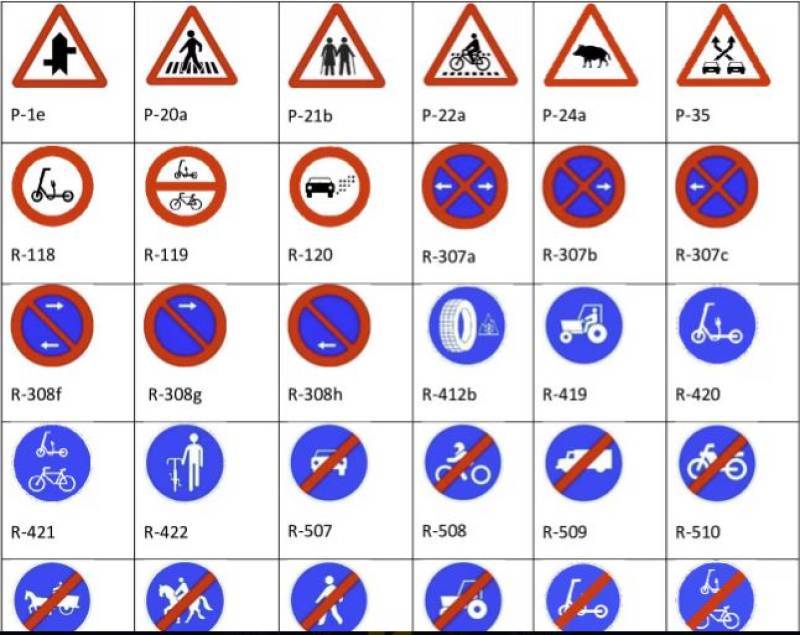
 Carlos Alcaraz is something of a point of pride for people in Spain (and not just the Spanish!), especially those in his native Murcia. Whether it’s the boyish grin that gives him a Roger Federer-ish likeability or his sheer determination to never give up that has echoes of Rafa Nadal, for whatever reason Alcaraz is intensely popular. And talented of course. And, perhaps most endearingly of all, he is incredibly humble.
Carlos Alcaraz is something of a point of pride for people in Spain (and not just the Spanish!), especially those in his native Murcia. Whether it’s the boyish grin that gives him a Roger Federer-ish likeability or his sheer determination to never give up that has echoes of Rafa Nadal, for whatever reason Alcaraz is intensely popular. And talented of course. And, perhaps most endearingly of all, he is incredibly humble. The same goes for Airport Buses. Launched just weeks ago, the new shuttle bus service at Corvera Airport is already being widely praised for its modern fleet, reliable schedules and friendly staff. Loads of people have already used its coaches and private transfer vehicles to move between the airport and various parts of the Region, and even as far as Torrevieja to the north and San Juan de los Terreros to the south, but the truth is that this is a commercial venture, too, and its long-term future hinges on steady passenger growth. If people want to see this service continue and even expand in future, those who fly in and out of the airport must support it by actually using it. If you don’t use it, you’ll lose it.
The same goes for Airport Buses. Launched just weeks ago, the new shuttle bus service at Corvera Airport is already being widely praised for its modern fleet, reliable schedules and friendly staff. Loads of people have already used its coaches and private transfer vehicles to move between the airport and various parts of the Region, and even as far as Torrevieja to the north and San Juan de los Terreros to the south, but the truth is that this is a commercial venture, too, and its long-term future hinges on steady passenger growth. If people want to see this service continue and even expand in future, those who fly in and out of the airport must support it by actually using it. If you don’t use it, you’ll lose it.
 The deal will cover travel between July 1 and September 30, so basically the entire summer season. What the Verano Joven means for younger jetsetters is savings of up to 90% on regular state bus services and those conventional medium distance and narrow-gauge train routes. The faster Avant trains will come with a 50% discount, and high-speed and long-distance tickets from all operators will also be half price.
The deal will cover travel between July 1 and September 30, so basically the entire summer season. What the Verano Joven means for younger jetsetters is savings of up to 90% on regular state bus services and those conventional medium distance and narrow-gauge train routes. The faster Avant trains will come with a 50% discount, and high-speed and long-distance tickets from all operators will also be half price. Back in November, Marciano Gómez, the health councillor for the entire Valencian Community, announced that GPs (or médicos de cabecera as they’re known locally) would no longer have to work on Saturdays. The idea is to give them a better work life balance, and those Saturday hours will be shifted to weekday afternoons instead.
Back in November, Marciano Gómez, the health councillor for the entire Valencian Community, announced that GPs (or médicos de cabecera as they’re known locally) would no longer have to work on Saturdays. The idea is to give them a better work life balance, and those Saturday hours will be shifted to weekday afternoons instead. The fossils have been found in four places: rocky areas in Vallongues (Elche), Tibi, Agos and Biar. What they’ve uncovered is absolutely fascinating. There’s amber, tooth fragments, scales from amphibians and ancient reptiles, partial skeletons of lungfish and freshwater sharks, plus incredibly well-preserved plant remains including horsetails, ferns and early cone bearing trees.
The fossils have been found in four places: rocky areas in Vallongues (Elche), Tibi, Agos and Biar. What they’ve uncovered is absolutely fascinating. There’s amber, tooth fragments, scales from amphibians and ancient reptiles, partial skeletons of lungfish and freshwater sharks, plus incredibly well-preserved plant remains including horsetails, ferns and early cone bearing trees. The work will include a full revamp of the arrivals tunnel and nearby roads, new paving, smart pedestrian crossings, improved parking signage, and restructured footpaths. Traffic direction around the terminal will also be adjusted to better manage both private and commercial vehicles.
The work will include a full revamp of the arrivals tunnel and nearby roads, new paving, smart pedestrian crossings, improved parking signage, and restructured footpaths. Traffic direction around the terminal will also be adjusted to better manage both private and commercial vehicles.